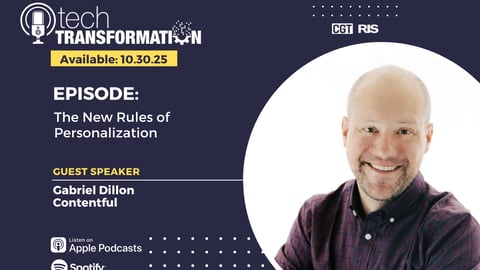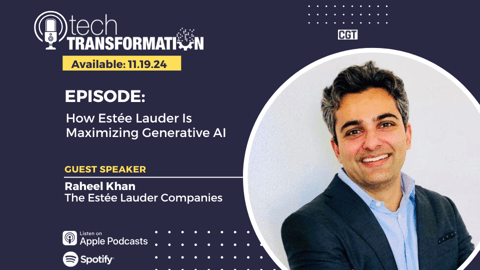Tech Transformation Podcast: Jackie Long On How Auto Allocation Fuels Bealls’ Ability to React and Respond to Store Performance
The retailer Bealls operates over 600 stores in 23 states, and the company is growing, adding 150 stores in the past two and a half years. In this episode of Tech transformation, we’re talking with Jackie Long, director of merchandise process at Bealls, about how the deployment of auto allocation technology is helping them react to the actual performance of these stores.
We're joined by Richard Widdowson, VP, global retail and consumer solutions at SAS and a CGT/RIS Executive Council member. Listen for conversation about the gains Bealls made, what's next in retail technology, and what's expected for the greater retail industry.
Listen to learn:
- Why Bealls first implemented the new technology and their pain points
- What the retail environment looks like for them right now and how the technology is improving their abilities to serve customers
- Whether their experiences align elsewhere in the retail industry
- The benefits they’ve experienced from automation in both their stores and the supply chain
- How their customers and employees are responding
- What’s next for Bealls with retail technology
- Some of the other ways retailers are preparing for tomorrow’s challenges and opportunities
Subscribe
Excerpts
Long on the value of investing in forecasting: “My leadership saw a lot of value and potential for our future around forecasting and how we can embed that into our planning and allocation processes. Coming off green screens, everything was manual back then. So I remember the Excel worksheets and having to do queries to get the data, so this was obviously a significant improvement in the way that we allocated [and we were] no longer planning in Excel either. This moved us lightyears ahead to something that's far more sophisticated and integrated through the entire process.”
Long on future investments: “I see a lot of potential around AI, machine learning, forecast improvements, certainly all of those things. But the next thing that we're really putting a lot of effort into, and I'm super excited about, is some automation around the identification of sales potential, and then systematically adding funding in to those plans, so that the buyer immediately has the dollars available to them to chase after the things that we have a very granular opportunity.
“In the past, we would have leveraged a location planner or someone in the organization to find those nuggets of potential and trend. You're talking about millions of data points — there's no way that anyone can hit on this low level every single week, and see what's trending, and then roll it all up, and then try to pitch it for funding. So what this will do is automate the predictive potential, and then the planner can focus on strategic planning things that the system couldn't predict. We're kind of pivoting where our planning organization will be focused so that they can make an impact on the things that we really need strategic effort around.”
Widdowson on how other retailers are preparing for the future: “As we look forward and as we work with progressive retailers like Bealls here, I think those retailers are starting to really realize that supply chain resiliency is actually a key enabler now to profitable growth. I go back to my prior career and supply chain was just the cost of doing business, and now it's becoming a strategic enabler and actually is starting to provide companies with that point of difference in being able to [predict] where the customer [is] going to go next? How do you continue to meet and exceed those expectations with ever-changing needs and demands? …
“But if I was to fast-forward maybe the next three to six months, I think it's the capability to be able to kind of predict and use modeling to understand what might happen [and] how do I get ahead of the customer? How do I anticipate the customers’ needs? Or how do I anticipate potential disruptions? I don't think any of us want to go back to the last couple of years, but how do you anticipate what might happen? And the power I think now with leveraging the technology is to let me model out those different scenarios and provide the ability to prevent a problem before it becomes a problem. So create those different scenarios, model out the impact, make the smart, quick decisions, and head those problems off before they become a problem. I think that's what's going to come in the next three to six months.”
Tech Transformation Videos
Looking for just a snapshot? Watch a segment of the interview and see more Tech Transformation episodes.








